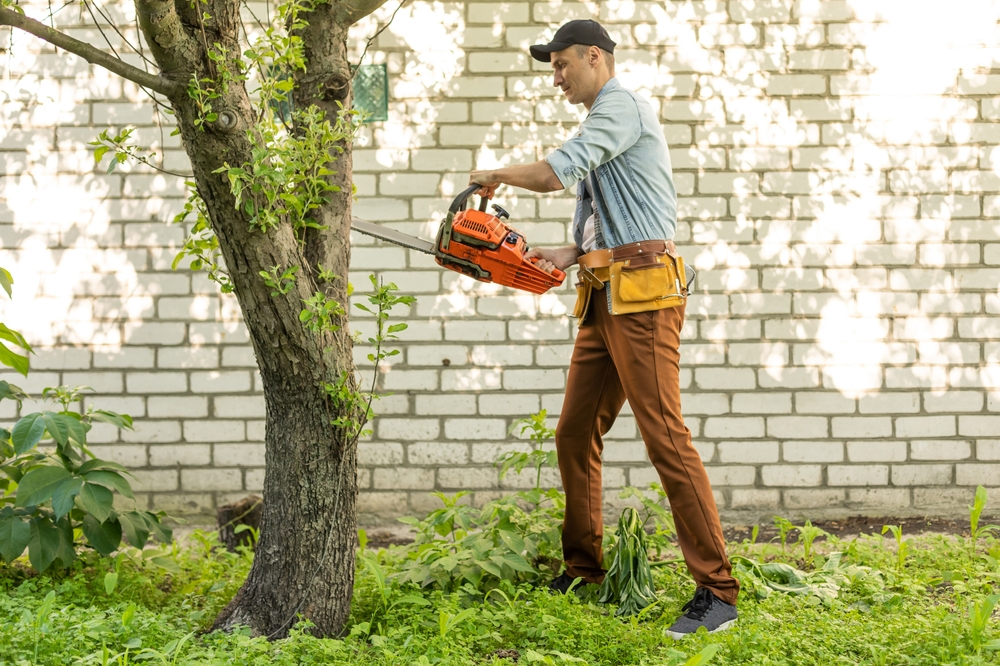DIY Tree Removal in Richmond: Safety Tips and Precautions
Richmond, Virginia, a city known for its vibrant culture and community spirit, often sees residents taking on DIY projects with enthusiasm. From home renovations to landscaping tasks, the DIY ethos is strong. However, when it comes to tree removal, it’s essential to tread cautiously. This article aims to explore the ins and outs of DIY tree removal in Richmond, focusing on safety tips and precautions to ensure a smooth and hazard-free process.
Research and Preparation
Before embarking on any DIY tree removal project, thorough research and meticulous preparation are paramount. Start by surveying the area where the tree stands, taking note of any potential hazards. This includes identifying nearby power lines, structures, and the condition of the tree itself.
Power lines pose a significant risk during tree removal, as contact with them can result in electrocution or power outages. Before beginning work, contact your local utility company to mark the location of underground utilities and discuss any overhead power lines that may be in the vicinity.
Assess the health and stability of the tree. Look for signs of decay, disease, or structural weakness, such as dead branches, cracks in the trunk, or leaning. A thorough assessment will help determine the safest approach for removal and minimize the risk of accidents.
Equally important is having the right equipment and tools for the job. This includes chainsaws, ropes, harnesses, and safety gear like gloves, eye protection, and hard hats. Investing in quality equipment and ensuring it is properly maintained will enhance safety and efficiency during the removal process.

Assessing Your Skills and Limits
DIY tree removal requires a unique set of skills and physical capabilities. Before undertaking such a task, it’s crucial to honestly assess your abilities and limitations. Climbing trees, operating heavy machinery, and safely felling large trees all require skill and experience.
Consider factors such as your comfort level with heights, physical strength, and familiarity with power tools. If you’re unsure about your abilities or lack the necessary skills, it’s best to seek professional assistance. The cost of hiring a professional arborist may be outweighed by the potential risks and liabilities associated with DIY tree removal.
Safety Precautions
Safety should always be the top priority when undertaking DIY tree removal. Before starting work, ensure you are wearing appropriate protective gear, including gloves, eye and ear protection, and a hard hat. These items will help protect you from flying debris, chainsaw kickback, and other potential hazards.
Having a first aid kit on hand is essential in case of accidents or injuries. Be sure to familiarize yourself with its contents and know how to use them effectively. Keep emergency contacts readily available, including local emergency services and the contact information for a nearby hospital or urgent care center.
Throughout the removal process, maintain a safe distance from the tree and be aware of your surroundings. Establish a clear escape route in case the tree falls unpredictably and be prepared to react quickly to any unforeseen circumstances. Working with a partner can provide an extra layer of safety and support, especially when operating heavy machinery or handling large branches.
Cutting Techniques
Proper cutting techniques are crucial for safely removing a tree. Start by making a directional cut on the side of the tree facing your intended fall direction. This cut should be at a 45-degree angle and extend one-third to halfway through the trunk’s diameter. Use a chainsaw or handsaw to make the cut, ensuring it is straight and clean.
Once the directional cut is complete, make a horizontal cut on the opposite side of the tree, slightly above the point where the directional cut meets the trunk. This will create a hinge that helps control the tree’s fall direction. Use a wedge or felling lever to guide the tree’s descent and prevent it from leaning or tipping over unexpectedly.
Throughout the cutting process, remain focused and attentive, ready to react to any changes in the tree’s behavior. Chainsaws are powerful tools that require skill and experience to operate safely. If you’re not confident in your abilities, consider hiring a professional arborist to handle the cutting and felling process.

Cleaning Up Safely
Once the tree is safely on the ground, the work is far from over. Take the time to clean up the area thoroughly, removing any debris or obstacles that could pose a tripping hazard. Use caution when handling heavy branches or logs, as they may shift unexpectedly and cause injuries.
Proper disposal of tree debris is essential to prevent environmental damage and comply with local regulations. Contact your city or county’s waste management department to inquire about disposal options for tree branches and trunks. Some municipalities offer curbside pickup or drop-off locations for yard waste, while others may require you to transport it to a designated facility.
Never attempt to clean up alone. Having a partner nearby can provide assistance in case of emergencies and ensure the job is completed safely and efficiently. Take breaks as needed to rest and rehydrate, especially if you’re working in hot or humid conditions. By prioritizing safety during every step of the process, you can minimize the risks and ensure a successful outcome.
Conclusion
DIY tree removal in Richmond can be a rewarding and satisfying experience, but it’s not without its risks. By conducting thorough research, assessing your skills honestly, and prioritizing safety precautions, you can minimize the dangers and ensure a smooth and hazard-free process. Remember, there’s no shame in seeking professional help if you’re unsure or uncomfortable with tackling the task on your own. Stay safe, and happy tree removal!
Tree Trimming Richmond
(804) 533-3943
https://treetrimmingrichmond.com/



